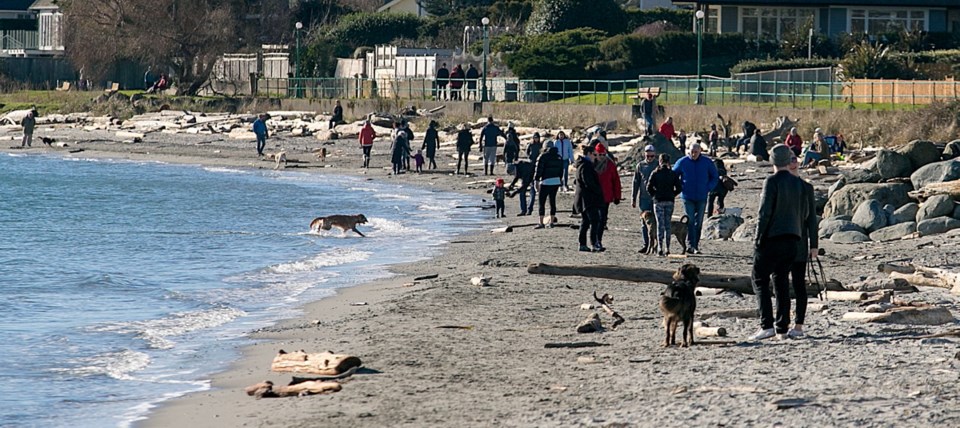We’re celebrating Family Day this weekend, which in Victoria is a bit of an oxymoron.
Victoria celebrating families is like Alberta breaking out the bunting for Oceans Day. Statistically, we don’t have many families, not in the traditional sense, anyway. Only one in five households here are of the Happy Days model: two parents and their offspring under one roof.
In fact, in no other city in Canada do children comprise such a small proportion of the population. Just 13 per cent of people in Greater Victoria are under the age of 15, according to the last census.
At the other end of the spectrum, 21 per cent are over 65. That’s the fifth-highest rate among Canada’s 35 census metropolitan areas. It’s why pickleball is a bigger deal than kinder gym in these parts, and why concerts at Save-On-Foods Memorial Centre tend to feature artists old enough to travel for free on B.C. Ferries.
Note that some high schools now depend on foreign students to pad out enrolment, ensuring there are enough bums in seats to justify offering Chemistry 12, or whatever. A shortage of teens in some Gulf Islands means traditional after-school jobs — bagging groceries, pumping gas — are performed by grey-hairs.
So why, then, do we mark Family Day? Because that’s what Alberta came up with in 1990 when that province decided to add a long weekend to the expanse of calendar that stretched, like that endless, snowswept highway in Fargo, from New Year’s to Good Friday.
We suspect Alberta only chose the name because Stare Out The Window At The Minus 40 Bleakness And Weep In Despair Day was too long. Had the Albertans called it Pipeline Appreciation Day, we probably would have embraced that, too, just to get a February stat. Hell, Elizabeth May would have driven the float at the front of the parade,
Anyway, Saskatchewan and Ontario followed suit with their own Family Day in 2007 and 2008 respectively. Manitoba copied them in 2009, but called it Louis Riel Day, a belated way of saying “sorry we hanged you for treason.” Prince Edward Island also introduced its own version that year — Potato Pope Day, or something like that.
B.C. was late to the party, only adopting Family Day in 2013. Even then, we had trouble getting into the spirit of things: Until the civic workers’ union stepped in to keep it open, the City of Victoria planned to shut the Crystal Pool for the day, which, given the nature of the holiday, seemed akin to locking the churches at Easter.
Also, because the stat didn’t apply to federal employees — meaning everybody at CFB Esquimalt had to go to work while most other Victorians lolled on the couch — there was fear that an embittered navy would open fire, just like it did in 1996 when HMCS Regina accidentally launched an unarmed rocket into the shed behind Pete’s Tent and Awning in View Royal.
At least Family Day encourages us to look at where we’re at, and where we’re going, both as a city and as a country. The proportion of children might be particularly low in Victoria (thanks, at least in part, to the financial hurdles faced by young people here) but it’s not as though the rest of the country breeds like the Waltons, either.
Canada’s fertility rate — 1.6 births per woman — is well below replacement levels. It hasn’t reached 2.1, the level needed to maintain a stable population, since 1971, half a century ago.
It’s in that context that we need to consider Canadians’ attitudes to immigration. A poll done for the Canadian Press last summer showed 63 per cent of Canadians want Ottawa to put the brakes on the number of newcomers because they think the country might be reaching a limit in its ability to integrate them.
Yet talk to economists and they’ll tell you immigration is essential, particularly given a demographic top-heavy with pensioners. We need an infusion of young, skilled workers to sustain the economy, and they can only be found outside the country.
Other countries are competing for them, too. Fortunately for us, Canada, which just topped the 2020 Quality of Life index, has an edge in attracting such people.
Note that one in five Canadians were born outside Canada. Most of the rest of us had at least one grandparent with an accent from somewhere else. All of them came here looking for a better life for their families, the ones we’re celebrating today.



